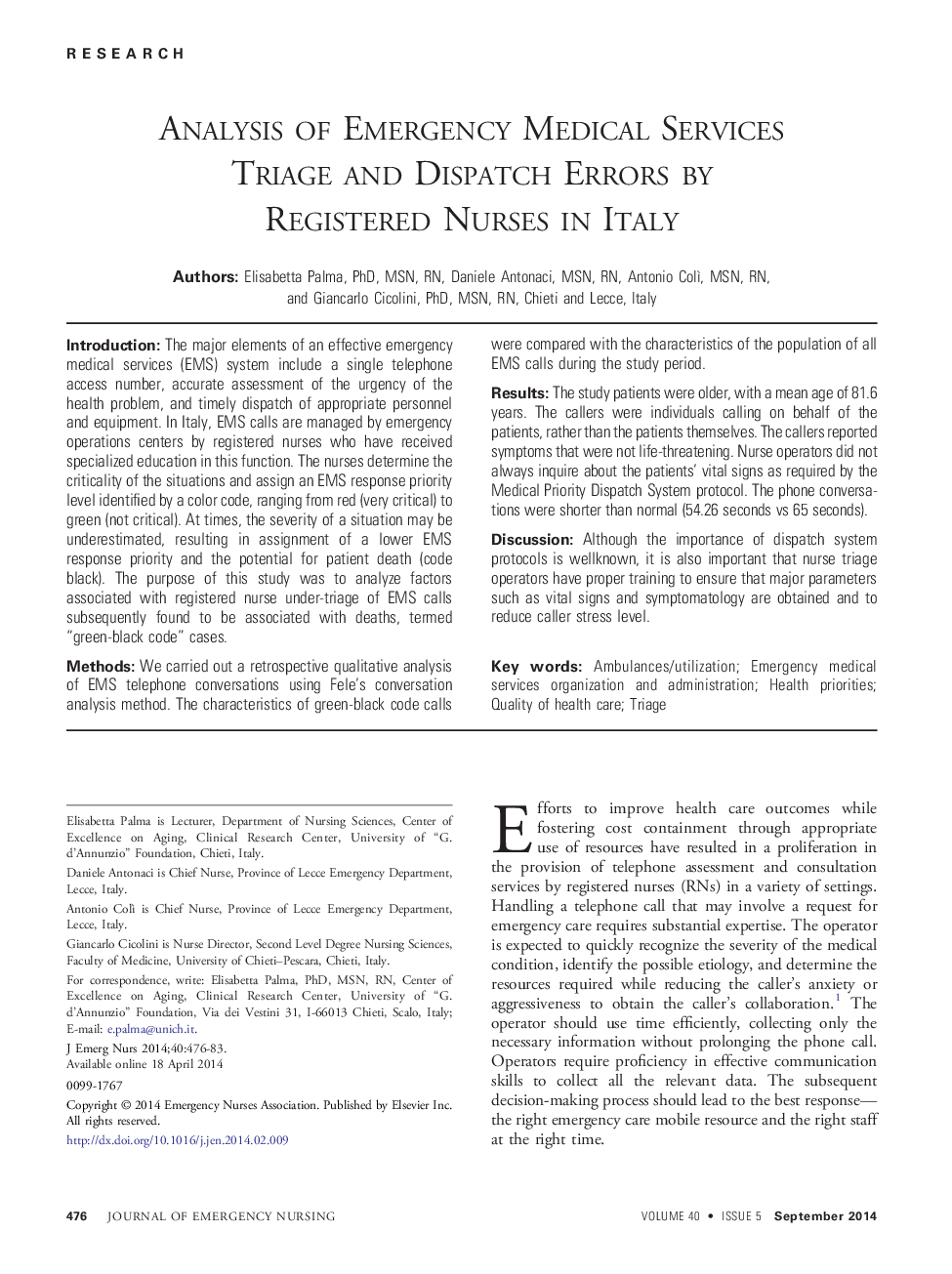| Article ID | Journal | Published Year | Pages | File Type |
|---|---|---|---|---|
| 2610022 | Journal of Emergency Nursing | 2014 | 8 Pages |
IntroductionThe major elements of an effective emergency medical services (EMS) system include a single telephone access number, accurate assessment of the urgency of the health problem, and timely dispatch of appropriate personnel and equipment. In Italy, EMS calls are managed by emergency operations centers by registered nurses who have received specialized education in this function. The nurses determine the criticality of the situations and assign an EMS response priority level identified by a color code, ranging from red (very critical) to green (not critical). At times, the severity of a situation may be underestimated, resulting in assignment of a lower EMS response priority and the potential for patient death (code black). The purpose of this study was to analyze factors associated with registered nurse under-triage of EMS calls subsequently found to be associated with deaths, termed “green-black code” cases.MethodsWe carried out a retrospective qualitative analysis of EMS telephone conversations using Fele’s conversation analysis method. The characteristics of green-black code calls were compared with the characteristics of the population of all EMS calls during the study period.ResultsThe study patients were older, with a mean age of 81.6 years. The callers were individuals calling on behalf of the patients, rather than the patients themselves. The callers reported symptoms that were not life-threatening. Nurse operators did not always inquire about the patients’ vital signs as required by the Medical Priority Dispatch System protocol. The phone conversations were shorter than normal (54.26 seconds vs 65 seconds).DiscussionAlthough the importance of dispatch system protocols is wellknown, it is also important that nurse triage operators have proper training to ensure that major parameters such as vital signs and symptomatology are obtained and to reduce caller stress level.
